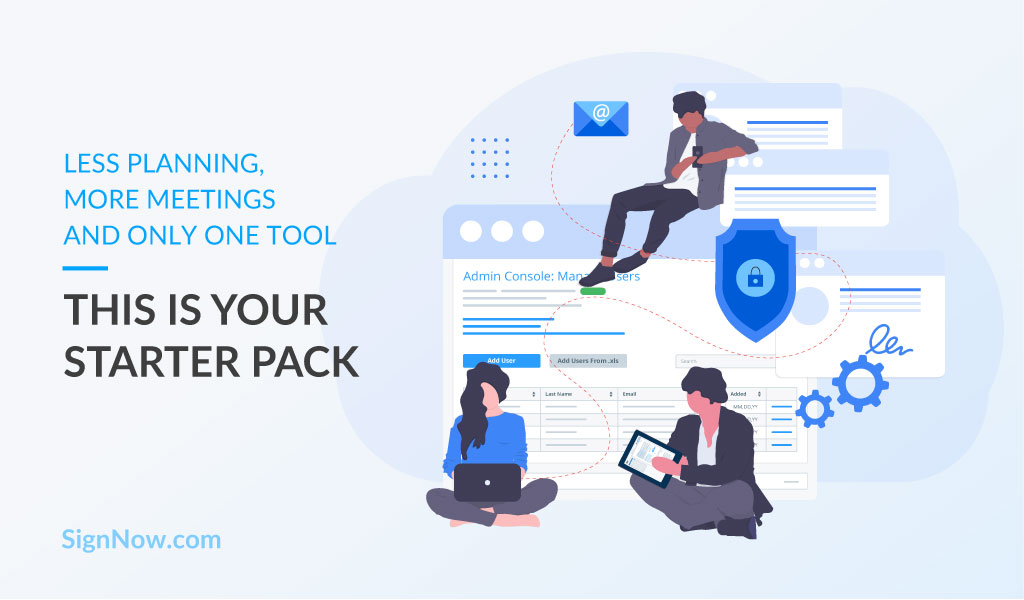
Working as a team always increases the chances of a project’s success.
The thing is, that the more people who are engaged in the process – the more responsibility they will want to take on in order for the team to get a successful result.
Having the ability to get people to work together with cohesion can be a manager’s most valuable skill – one which can take years to develop. However, there are quite a few easy techniques and tools out there that can encourage your team to perform well, while getting more done in a shorter amount of time.
Less planning, more meetings and only one tool – this is your starter pack!
Switch from making plans to conducting meetings
Never make a plan of actions without first having a meeting (except the plan for that meeting).
Plans (made without collaborating with your team) give you the illusion of having everything under control. Conducting meetings with your coworkers will show you the actual state of things on the ground.
Don’t forget about the four-component formula of successful meetings:
- When depicting tasks and goals, mention all weak points, your concerns and expectations.
- Let your colleagues ask you questions. This way, you’ll understand the most complicated and controversial hurdles of the project.
- Ask questions as well. By doing so, you show respect for your colleagues and their ideas.
- Keep the meeting short. It’s perfectly fine to conduct meetings as often as possible (it’s ok to even have them every morning) but keep them short, sweet, and to the point.
Right after the meeting, organize all the information and be ready to present it in both verbally and in a written format.
Optimize team size for profitable collaboration
The ideal team size for maximal collaboration is between 3 and 8 people.
Here’s the rule: the less people working on one area – the better and more qualitative their work will be.
This is again connected with the level of engagement. In a report titled “The State of The American Workplace”, it was found that 42% of employees working at companies of 10 or fewer were enthusiastically engaged at work – versus only 30% of employees at larger companies.
Did you know about the “Ringelmann Effect”?
This concept basically talks about the tendency for individual team members to become less productive as the size of a group increases.
It was named after Maximilien Ringelmann – a French professor of agricultural engineering who passed away in 1931. In one of his experiments, he asked volunteers to perform a very simple task – to pull on a rope. He found that when only one person was pulling on the rope, they gave 100% of their effort. However, as more people were added, the effort of each individual decreased.
Small teams become savvy in their field of cooperation since they don’t have too many distractive factors. Moreover, small teams have the ability to regroup faster, and they take less time to regain focus after a break.
The main takeaway here is that it’s better to have an excellent team of 5, than an average team of 50.
Organize teams online by using a team collaboration tool
Now it’s time to fasten those skills we’ve discussed in the previous paragraphs.
A great way to do this is by using online tools when working with your documents. And here you have quite a lot of pros. One of them is that you can give yourself some “breathing space” by managing parts of your colleagues’ work without the need to constantly meet them in-person.
SignNow provides you with team collaboration tools for organizing and centralizing tasks that can be solved 100% online.
- Create teams for cooperating on particular documents. You can create SignNow teams for individual departments within your organization – like HR, Legal, and Sales. You can also create separate SignNow teams that include members from multiple departments. This allows you to control the access to documents within specific departments (for example, restricting access to contracts meant only for the Legal team) and also to share other documents across your broader organization.
- Create the organizational dashboard. From the organizational dashboard, you can see all of your users’ and documents’ stats, including documents created, documents sent for signing, documents completed, average completion time, and number of invite receipts. Additionally, you can search for documents across your entire organization, edit templates that your team can use, modify your team settings, and modify your organization-wide settings through the organizational dashboard.
With SignNow, you can also set advanced options for teams: add a team admin, remove users and transfer document ownership.
Start using these techniques and develop your skills together with the whole team.

